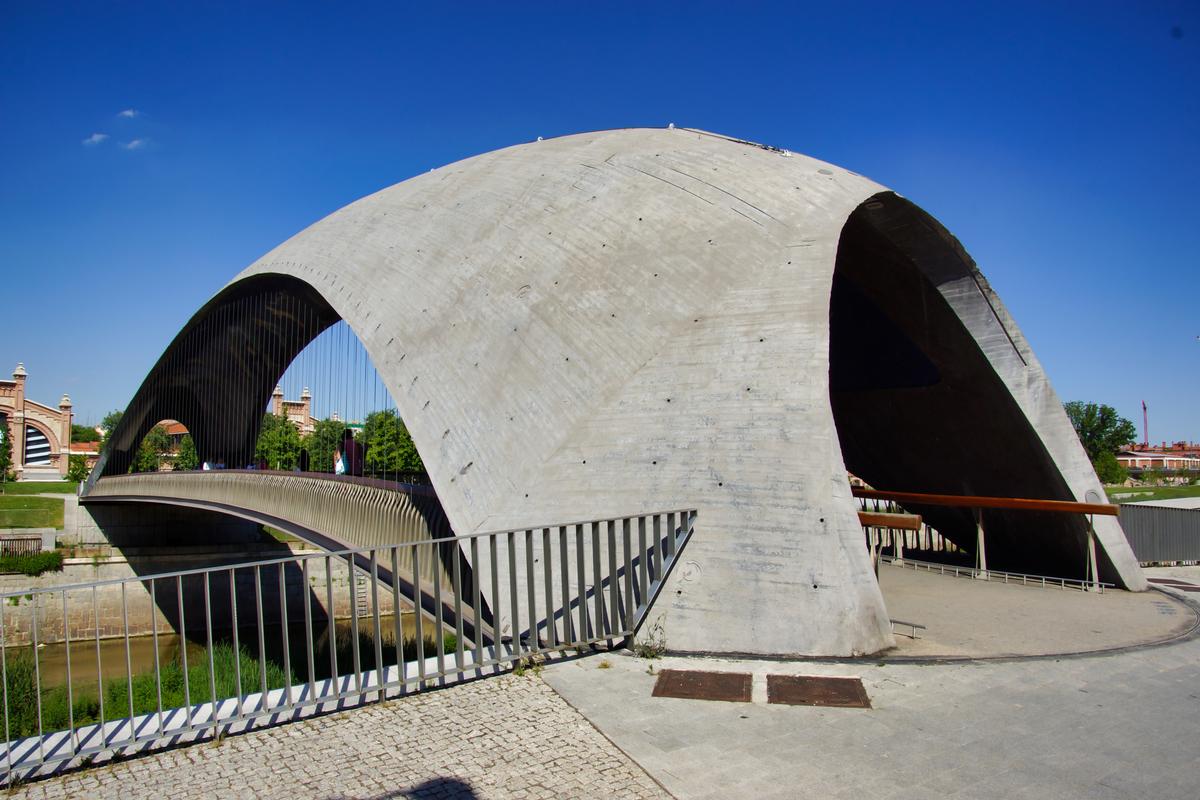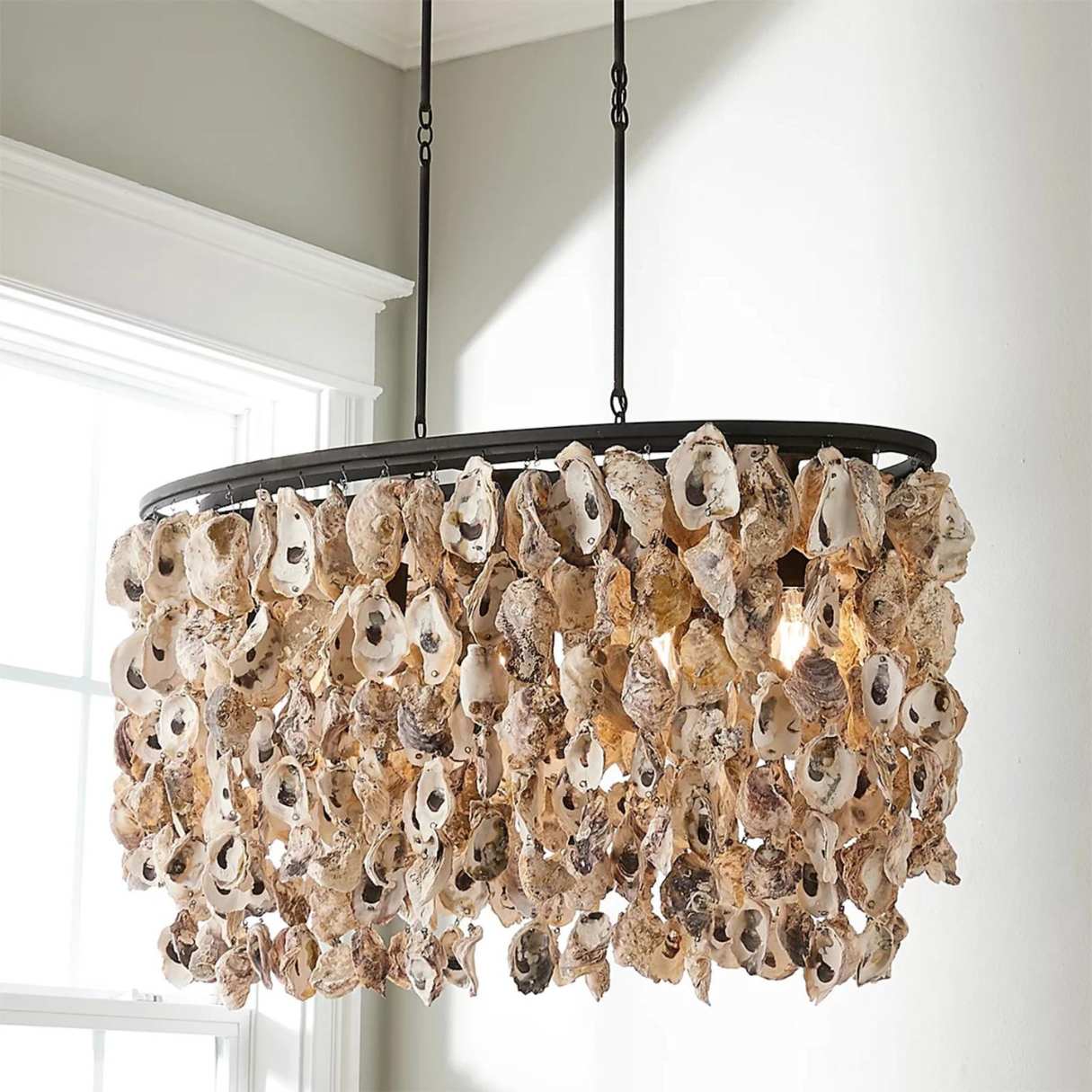Home>diy>Building & Construction>What Is Shell Construction


Building & Construction
What Is Shell Construction
Modified: January 24, 2024
Discover the fundamentals of shell construction in building construction. Learn about the various materials, techniques, and considerations involved in creating a strong and durable building envelope.
(Many of the links in this article redirect to a specific reviewed product. Your purchase of these products through affiliate links helps to generate commission for Storables.com, at no extra cost. Learn more)
Introduction
Welcome to the world of shell construction! In the world of building and construction, the term “shell construction” refers to a unique method of constructing architectural structures that rely on the inherent strength and stability of their shell-like forms. These structures are renowned for their elegant and innovative designs, pushing the boundaries of engineering and architectural possibilities.
The concept of shell construction dates back centuries, with its roots in ancient civilizations such as the Roman and Byzantine empires. However, it wasn’t until the 20th century that shell construction truly flourished, thanks to advancements in materials and construction technologies.
Shell structures derive their strength from their curved, self-supporting forms. Unlike traditional frame or column-and-beam structures, they distribute the loads uniformly across their surfaces, making them remarkably efficient in terms of materials usage.
In this article, we will delve deeper into the world of shell construction, exploring its definition, history, types, advantages, and disadvantages. We will also touch upon the materials used, structural analysis and design considerations, construction techniques, and provide examples of famous shell structures. Lastly, we will discuss future trends in shell construction and its potential impact on the field of architecture and engineering.
So, let’s embark on this fascinating journey into the world of shell construction and uncover the secrets behind these impressive architectural marvels!
Key Takeaways:
- Shell construction combines innovative design, structural efficiency, and architectural creativity, from ancient wonders to modern masterpieces, captivating the world with its elegance and iconic forms.
- The future of shell construction holds promise with advanced materials, digital fabrication, sustainability-driven designs, smart technologies, and biomimicry shaping the next generation of awe-inspiring and structurally efficient structures.
Definition of Shell Construction
Shell construction is a method of building architectural structures that relies on the strength and stability of curved or shell-like forms. Unlike traditional frame or column-and-beam structures, shell structures distribute the loads evenly over their surfaces, resulting in efficient use of materials and unique architectural designs.
Shell structures can be found in a wide range of buildings, including stadiums, exhibition centers, museums, and even residential homes. They are characterized by their ability to span large distances without the need for internal supporting columns, creating open and flexible spaces.
The main feature of a shell structure is its curved shape, which can be either single curved (like a dome or a barrel vault) or double curved (like a hyperbolic paraboloid or a spherical surface). These curved forms allow the structure to efficiently resist external loads, such as wind or snow, by translating the forces into compressive forces along the surface.
One important aspect of shell construction is its ability to create thin and lightweight structures. By utilizing the inherent strength of their curved forms, shell structures require less material compared to traditional construction methods. This not only reduces construction costs but also allows for more sustainable and environmentally friendly buildings.
Shell construction requires advanced engineering and architectural expertise to design and construct. The geometry and curvature of the shell play a crucial role in its stability and load-bearing capacity. Additionally, careful consideration must be given to factors such as material properties, construction techniques, and structural analysis to ensure the safety and durability of the shell structure.
In summary, shell construction is a unique and innovative method of building architectural structures that relies on the strength and stability of curved forms. By utilizing the inherent properties of these shapes, shell structures offer efficient use of materials, impressive architectural designs, and the ability to create large, open spaces.
History of Shell Construction
The history of shell construction can be traced back to ancient civilizations, where early architects and engineers experimented with various forms of curved structures. One of the earliest examples of shell structures can be found in the Roman era, with the construction of the famous Pantheon in Rome.
The Pantheon, built in 126 AD, features a massive concrete dome with a diameter of 43 meters. The dome, known for its impressive span and structural integrity, showcases the early mastery of shell construction. By utilizing a combination of concrete and lightweight aggregate, the Romans were able to create a self-supporting dome that stood the test of time.
During the Renaissance period, architects continued to explore the possibilities of shell construction. Filippo Brunelleschi, an Italian architect, took inspiration from the Roman Pantheon and applied its principles to the construction of the dome of the Florence Cathedral. Completed in 1436, the dome’s unique design and construction techniques became an inspiration for future generations.
In the 20th century, advancements in materials and engineering techniques revolutionized shell construction. Innovations in reinforced concrete, such as the invention of the thin-shell concrete structure by François Hennebique in 1892, opened up new possibilities for creating lightweight yet strong shell structures.
One of the most influential figures in modern shell construction is the Spanish architect Antoni Gaudí. Gaudí’s iconic works, such as the Sagrada Familia and Casa Milà in Barcelona, showcase his innovative approach to shell design. Gaudí utilized various geometric forms, including hyperbolic paraboloids and ruled surfaces, to create unique and organic shell structures.
Another significant development in shell construction came with advancements in computer-aided design and structural analysis. The ability to model and analyze complex geometries allowed architects and engineers to push the boundaries of shell construction. This led to the creation of iconic structures like the Sydney Opera House in Australia, designed by Jørn Utzon, which showcases a series of sail-like shells.
In recent years, shell construction has seen further advancements with the integration of sustainable design principles. Architects and engineers are exploring biomimicry and bio-inspired designs, taking inspiration from natural shell structures found in nature. This approach aims to create more efficient and environmentally friendly buildings.
Overall, the history of shell construction demonstrates the continuous evolution and innovation in architectural and engineering techniques. From the ancient Romans to modern-day architects, shell structures have captivated the imagination and pushed the boundaries of what is possible in building design.
Types of Shell Structures
Shell structures come in various forms, each with its unique architectural and structural characteristics. Here are some of the most common types of shell structures:
- Domes: Domes are one of the most recognizable types of shell structures. They are characterized by their curved, roof-like form that covers a circular or polygonal space. Domes can be found in ancient and modern architecture, such as the Pantheon in Rome and the Dome of the Rock in Jerusalem.
- Barrel Vaults: Barrel vaults are arched structures that resemble a half-cylinder or a tunnel. They are typically used to cover long and narrow spaces, such as corridors or tunnels. The construction of barrel vaults can be seen in historical structures like ancient Roman aqueducts.
- Hyperbolic Paraboloids: Hyperbolic paraboloids are double-curved shell structures that resemble a saddle shape. They are known for their structural efficiency and aesthetic appeal. Hyperbolic paraboloids can be found in famous buildings like the TWA Flight Center at JFK Airport in New York.
- Folded Plates: Folded plates are flat plates that are folded or bent to create a structural form. They are often used in roofs, walls, or floors to create curved or angular shapes. Buildings, such as the UNESCO headquarters in Paris, demonstrate the use of folded plate structures.
- Grid Shells: Grid shells are composed of a network of interconnected structural elements, forming a lattice-like structure. The grid shell’s geometry allows it to distribute loads efficiently while maintaining an open and lightweight appearance. Notable examples include the Khan Shatyr Entertainment Center in Kazakhstan and the Weald and Downland Gridshell in the UK.
These are just a few examples of the diverse range of shell structures that exist. Each type offers its own set of advantages and is suitable for different architectural and structural requirements. Architects and engineers continue to explore new forms and materials to push the boundaries of shell construction and create innovative and sustainable designs.
Advantages of Shell Construction
Shell construction offers numerous advantages that make it an attractive choice for architects, engineers, and building owners. Here are some key advantages of shell construction:
- Efficient Use of Materials: Shell structures make efficient use of materials due to their self-supporting curved forms. The load is evenly distributed over the surface, allowing for thinner and lighter construction compared to traditional methods. This not only reduces costs but also contributes to sustainability efforts by minimizing resource consumption.
- Large Span Capabilities: Shell structures can span large distances without the need for internal supporting columns or beams. This creates open and flexible spaces, making them ideal for applications like sports arenas, exhibition halls, and concert venues. Shell structures can provide unobstructed views and ample space for various activities.
- Architectural Freedom: Shell construction allows architects to explore unique and innovative designs. The curved forms of shell structures offer artistic and aesthetic appeal, enabling architects to create iconic and visually stunning buildings. Shell structures have been celebrated for their architectural beauty and ability to blend harmoniously with the surrounding environment.
- Structural Stability: Shell structures exhibit excellent structural stability. The load distribution over the curved surface allows for efficient load resistance, making them highly resistant to external forces such as wind, earthquakes, and snow. This stability also contributes to the longevity and durability of shell structures.
- Flexibility in Functionality: Shell structures provide flexibility in terms of functionality. Due to the absence of internal columns or beams, the interior space can be easily configured and adapted to meet changing needs. This adaptability makes shell structures suitable for a wide range of applications, from residential and commercial buildings to cultural and recreational facilities.
These advantages highlight the appeal of shell construction in the architectural and engineering world. By combining efficiency, flexibility, and aesthetic appeal, shell structures offer unique solutions that meet both functional and design requirements. As technology and materials continue to progress, we can expect even more advancements in the field of shell construction, further expanding its possibilities and applications.
Read more: How To Store Shotgun Shells
Disadvantages of Shell Construction
While shell construction offers a wide range of benefits, it also comes with certain limitations and challenges. Here are some of the key disadvantages to consider:
- Complex Design and Engineering: The design and engineering of shell structures can be complex and require specialized expertise. The unique geometry and curvature of shell forms often require advanced computational tools and analysis to ensure structural stability and performance. This adds complexity, time, and cost to the design and construction process.
- Cost Considerations: Shell construction can be more expensive compared to traditional building methods. The complex design, specialized engineering, and materials required for shell structures often come at a higher price tag. Additionally, the need for skilled labor and more intricate construction techniques can further contribute to the overall cost.
- Limited Flexibility in Interior Layout: While shell structures offer flexibility in terms of open spaces, they can limit the interior layout options. The absence of internal columns or beams may constrain the placement of walls and partitions. This can potentially restrict the adaptability and customization of the interior space.
- Challenges with Maintenance and Repairs: Due to their unique forms, shell structures can present challenges in terms of maintenance and repairs. The curved surfaces may require specialized equipment and expertise for cleaning, painting, and addressing any structural issues that may arise. Accessibility to all areas of the structure can also be a logistical challenge.
- Integration of Building Systems: The integration of building systems, such as HVAC, electrical, and plumbing, can be more complex in shell structures. The absence of traditional structural elements may require innovative solutions for routing and concealing these systems, which can increase the overall project complexity and cost.
Despite these disadvantages, shell construction continues to be a popular choice for architects and engineers due to its unique aesthetic appeal, structural efficiency, and versatility. By carefully considering these limitations and addressing them through advanced design and construction techniques, the drawbacks associated with shell construction can be mitigated, leading to successful and iconic architectural structures.
When constructing a shell, ensure that the design and materials are suitable for the specific environmental conditions, such as wind, seismic activity, and soil type. Properly inspect and maintain the shell to prevent deterioration and ensure structural integrity.
Materials Used in Shell Construction
Shell construction requires the use of materials that can withstand the structural demands of curved forms while providing durability and strength. Here are some commonly used materials in shell construction:
- Reinforced Concrete: Reinforced concrete is widely used in shell construction due to its excellent strength and versatility. It consists of concrete reinforced with steel bars or mesh to enhance its tensile strength. Reinforced concrete can be molded into various shapes and is often used for domes, vaults, and folded plate structures.
- Steel: Steel is another popular material used in shell construction. Its high strength-to-weight ratio allows for the creation of lightweight yet strong structures. Steel shells can be prefabricated offsite and assembled onsite, making it a practical choice for large-span grid shells and complex curved forms.
- Timber: Timber is a sustainable and aesthetically pleasing material used in shell construction. It is often employed in the construction of lightweight timber shells, such as hyperbolic paraboloids and grid shells. Timber structures offer a warm and natural aesthetic while providing structural strength and performance.
- Glass: Glass is utilized in shell construction to create transparent and visually striking structures. Glass shells offer transparency, allowing ample natural light to enter the space, and can create a sense of openness. They often require specialized glass systems with structural properties to support the loads and maintain the integrity of the shell.
- Fabric Membrane: Fabric membranes, made of woven or coated materials such as polyester or PTFE, are used in tensile membrane structures. These lightweight and flexible materials can be tensioned to form curved surfaces. Tensile membrane structures are often used for canopies, roofs, and temporary structures, adding to the versatility of shell construction.
Selection of the appropriate material depends on factors such as the desired aesthetic, structural requirements, budget, and durability considerations. Each material has its unique properties and limitations, and architects and engineers carefully evaluate these factors to choose the most suitable material for a particular shell structure.
It is worth noting that advances in technology and materials continue to expand the possibilities in shell construction. Innovations such as composite materials, 3D-printed structures, and sustainable building materials offer exciting opportunities for further advancements in the field.
By choosing the right materials and combining them with innovative design and construction techniques, shell construction can create visually striking, structurally sound, and sustainable architectural masterpieces.
Structural Analysis and Design of Shell Structures
The structural analysis and design of shell structures require careful consideration of their unique geometric and load-bearing characteristics. Here are the key aspects involved in the process:
- Geometry and Curvature: The geometry and curvature of a shell structure play a significant role in its structural behavior. The shape and form determine the distribution of loads and internal forces. Advanced computational tools, such as finite element analysis, are used to model and analyze the complex geometry of shell structures.
- Load Analysis: A thorough load analysis is essential to understand the forces acting on the shell structure. Various types of loads, including dead loads, live loads, wind loads, and seismic loads, need to be considered. The distribution and magnitude of these loads are crucial parameters for structural design and stability assessment.
- Material Selection: The choice of materials for shell structures is critical in ensuring structural integrity. Factors such as strength, elasticity, durability, and compatibility with the desired form are considered while selecting materials. Material properties, including their behavior under various loads, are analyzed and integrated into the design process.
- Structural Behavior: Understanding the structural behavior of shell structures is vital for their design and analysis. The load-bearing mechanism, stress distribution, and deformation patterns are evaluated to ensure that the structure can resist applied loads and maintain its stability. Advanced structural analysis techniques, such as nonlinear analysis, are often employed to accurately capture the behavior of shell structures.
- Construction Techniques: The construction techniques used for shell structures are influenced by their geometries and materials. Assembling and forming the shell shape can involve various methods such as formwork, casting, or assembling prefabricated components. The sequence and coordination of construction activities are carefully planned to ensure the integrity and quality of the structure.
- Code Compliance and Safety: Adhering to local building codes and safety regulations is essential for shell construction. Structural analysis and design must meet the prescribed standards to ensure adequate safety measures are in place. Measures such as fire resistance, structural stability during extreme events, and load capacity verification are critical considerations during the design process.
Additionally, collaboration between architects and structural engineers is crucial in the design of shell structures. Architects provide the vision and aesthetic considerations, while structural engineers ensure the structural integrity and performance of the design. The iterative process of design, analysis, and feedback leads to the optimization of the structure’s form and performance.
Advancements in computational modeling, analysis software, and construction techniques have significantly aided the design and analysis of shell structures. These advancements, coupled with sound engineering principles and aesthetics, enable the creation of innovative and structurally efficient shell structures that define the world of modern architecture.
Construction Techniques for Shell Structures
The construction of shell structures requires specialized techniques to bring the unique designs to life. These techniques vary depending on the materials used and the specific type of shell structure. Here are some common construction techniques employed for shell structures:
- Formwork: Formwork is a crucial step in constructing shell structures. It involves creating temporary molds or frameworks that define the shape of the shells during the concrete placement process. Formwork can be built using timber, steel, or pre-fabricated systems, and it must be carefully designed to achieve the desired shape and structural integrity of the shell.
- Reinforced Concrete Construction: Reinforced concrete is commonly used in shell construction, especially for domes and vaulted structures. A steel reinforcement framework is first set up within the formwork, followed by the pouring and placement of concrete. The concrete is then left to cure and harden, forming a strong and durable shell structure.
- Precast Construction: In precast construction, shell components are manufactured offsite in controlled factory conditions. This method allows for better quality control and precise fabrication of complex shapes. The precast elements are then transported to the construction site and assembled, reducing the time and complexity of on-site construction.
- Tensioned Fabric Construction: Tensioned fabric construction is often used for lightweight tensile membrane structures. It involves the installation of a steel or cable framework, which is then covered with a fabric membrane. The fabric is tensioned to create a curved surface, providing structural stability and visual appeal.
- Steel Fabrication: For steel shell structures, fabrication and assembly play a vital role. Steel components are usually fabricated offsite, ensuring precision in the manufacturing process. These components are then transported to the construction site and assembled according to the design plans. Techniques such as welding, bolting, and lifting are utilized to construct the steel shell structure.
- Composite Construction: Composite construction involves the combination of different materials, such as concrete and steel or concrete and glass, to form the shell structure. This method takes advantage of the unique properties of each material to optimize the strength, efficiency, and aesthetic appeal of the shell.
Regardless of the construction technique used, careful planning and coordination are critical for the successful execution of shell structures. Factors such as sequencing of construction activities, temporary supports, and proper quality control must be addressed to ensure the integrity of the structure. Additionally, safety measures, such as fall protection and careful handling of large components, are essential during the construction process.
Advanced construction technologies, such as Building Information Modeling (BIM) and computer-guided fabrication, are increasingly being utilized to enhance accuracy and efficiency in the construction of shell structures. These technologies aid in the digital visualization, coordination, and fabrication of complex forms, facilitating smoother construction processes.
By employing these construction techniques and embracing technological advancements, builders and designers can bring shell structures to life—achieving architectural beauty, structural integrity, and functional excellence.
Read more: How To Store Walnuts In Shell
Examples of Famous Shell Structures
Shell structures have captivated the world with their iconic designs and engineering marvels. Here are a few examples of famous shell structures that showcase the versatility and beauty of this architectural form:
- Sydney Opera House, Australia: Perhaps one of the most renowned examples of shell structures, the Sydney Opera House is an architectural icon. Designed by Danish architect Jørn Utzon, the building features a series of sail-like shells that converge to form its distinctive roof. Its unique design has made it a UNESCO World Heritage Site and a symbol of Australia.
- Palm Jumeirah Island, United Arab Emirates: The Palm Jumeirah Island in Dubai exhibits an extraordinary collection of artificial islands in the form of a palm tree. With its crescent-shaped breakwater and expansive palm-shaped fronds, this man-made island complex showcases the use of shell-like structures in large-scale land reclamation projects.
- Eden Project, United Kingdom: Located in Cornwall, England, the Eden Project is a famous botanical garden housed under massive geodesic dome-like structures. These biodomes, which resemble fragments of giant soap bubbles, create a controlled environment for diverse plant species from around the world. The architecture of the Eden Project showcases the use of lightweight materials in shell construction.
- Water Cube, China: Built for the 2008 Beijing Olympics, the Water Cube is an aquatics center designed with a unique bubble-like structure. The building’s exterior is composed of ethylene tetrafluoroethylene (ETFE) bubbles, resembling droplets of water. This translucent shell structure not only creates an eye-catching architectural design but also provides natural lighting inside the building.
- Guggenheim Museum Bilbao, Spain: Designed by the renowned architect Frank Gehry, the Guggenheim Museum Bilbao is a stunning example of organic and sculptural shell architecture. The titanium-clad building features fluid and curved forms that resemble a flowing structure, showcasing the possibilities of shell construction in creating dynamic and visually striking buildings.
These examples are just a fraction of the many remarkable shell structures worldwide. Each structure highlights the creativity, technical prowess, and aesthetic appeal that can be achieved through the innovative use of shell construction techniques.
These architectural wonders continue to inspire and push the boundaries of what is possible in the world of architecture, demonstrating the enduring legacy of shell structures.
Future Trends in Shell Construction
The future of shell construction is poised to witness exciting advancements, driven by technological innovations, evolving design philosophies, and a focus on sustainability. Here are some future trends that we can expect to see in the field of shell construction:
- Advanced Materials: The development of new materials, such as high-performance composites and bio-inspired materials, will open up new opportunities for shell construction. These materials offer enhanced structural properties, greater flexibility, and improved sustainability. Integrating these advanced materials into shell structures will enable even greater structural efficiency and design possibilities.
- Digital Fabrication: Digital fabrication technologies, such as 3D printing and robotic construction, will revolutionize the construction process for shell structures. These technologies allow for precise and efficient fabrication of complex forms with minimal waste. Customization and adaptation of shell designs to specific project requirements will become more accessible and cost-effective.
- Sustainable Design: Sustainability will remain a key focus in future shell construction. The incorporation of energy-efficient systems, green technologies, and renewable energy sources will enhance the environmental performance of shell structures. Passive design strategies, such as natural ventilation, daylighting, and rainwater harvesting, will be integrated seamlessly into shell designs to minimize the ecological footprint of the buildings.
- Smart Structures: The integration of smart technologies will enhance the functionality and efficiency of shell structures. Sensor networks and real-time monitoring systems will provide valuable data on structural performance, enabling predictive maintenance and improved safety. Adaptive shell structures that respond to environmental factors, such as temperature and wind, will become more prevalent.
- Biomimicry: Drawing inspiration from nature, biomimicry will continue to shape the future of shell construction. Mimicking biological structures and processes will result in more resilient and sustainable designs. From the structural strength of seashells to the efficiency of spiderwebs, nature offers a wealth of inspiration to optimize the design and engineering of shell structures.
- Integration of AI and Generative Design: Artificial intelligence (AI) and generative design will play a significant role in the future of shell construction. AI algorithms can process vast amounts of data and generate optimized solutions for structural designs. This will enable architects and engineers to explore an array of design possibilities and identify the most efficient and visually appealing configurations for shell structures.
The future of shell construction is bright, with an emphasis on sustainable design, technological advancements, and innovative solutions. By embracing these future trends, architects and engineers will continue to push the boundaries of what is possible, creating awe-inspiring and structurally efficient shell structures that shape the skylines of our cities.
Conclusion
Shell construction represents an extraordinary fusion of innovative design, structural engineering, and architectural creativity. From ancient wonders like the Pantheon to modern-day masterpieces like the Sydney Opera House, shell structures have captivated the world with their elegance, efficiency, and iconic forms.
Throughout history, shell construction has evolved, leveraging advancements in materials, engineering techniques, and design principles. From the self-supporting domes of the Romans to the computer-generated forms of today, shell structures push the boundaries of what is possible in architectural design.
Advantages such as efficient material use, large span capabilities, and architectural freedom make shell construction an attractive choice for architects, engineers, and building owners. The graceful curves and harmonious shapes of shell structures create visually stunning and awe-inspiring buildings that blend seamlessly with their surroundings.
However, shell construction does come with its challenges. Complex design considerations, cost implications, limitations on interior flexibility, and maintenance requirements require careful planning and expertise. Nonetheless, these obstacles are effectively tackled through advanced technologies, collaborative efforts, and a deep understanding of structural analysis and design.
Looking toward the future, the trends in shell construction hold great promise. Advanced materials, digital fabrication techniques, sustainability-driven designs, smart technologies, and biomimicry will shape the next generation of shell structures. These innovations will not only enhance structural efficiency but also prioritize environmental sustainability and occupant well-being.
In conclusion, shell construction continues to be a captivating and influential architectural approach, pushing the boundaries of design, engineering, and sustainability. The timeless beauty and structural efficiency of shell structures will continue to inspire architects, engineers, and designers to create remarkable structures that leave a lasting impact on both the built environment and the human experience.
Frequently Asked Questions about What Is Shell Construction
Was this page helpful?
At Storables.com, we guarantee accurate and reliable information. Our content, validated by Expert Board Contributors, is crafted following stringent Editorial Policies. We're committed to providing you with well-researched, expert-backed insights for all your informational needs.














0 thoughts on “What Is Shell Construction”